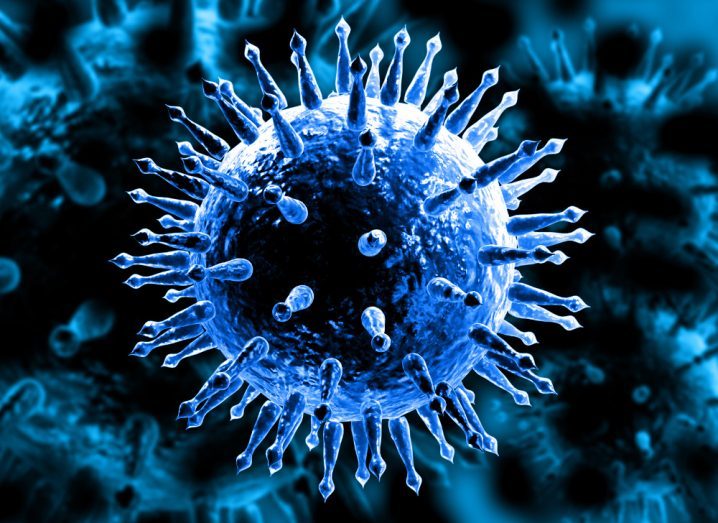hidden
Over 10 years experience of Traceability Solutions

By pharmatrax
Category: News
 No Comments
No Comments
Fighting the Corona Virus Epidemic: Diagnosis and Vaccination
The current epidemic of COVID-19 that originated in Wuhan, China is caused by a particular type of Corona Virus, namely the SARS-CoV-2. This virus is very similar to the SARS corona virus that caused an epidemic in 26 countries in 2003. Scientists are working round the clock to contain the virus and develop vaccines to prevent it from infecting all of the global population.
Over 5,000 fatalities have occurred worldwide because of the disease. Containment of the virus has failed and the best we can do now is to manage its spread. It is important to “flatten the curve” of exposure over the following months so that healthcare facilities don’t get overwhelmed otherwise more people will require a hospital bed then are available and consequently more will die.
If preventive measures are taken, the population will be exposed gradually and the cases that require hospitalization will come up at a more gradual pace so that beds for them will be available. One very effective measure for flattening the curve is social distancing.

Protective measures that can prevent the virus from spreading fast and can flatten the curve include:
- Canceling large gatherings
- Working from home
- Closing schools
- Avoiding crowds
- Self-quarantine – Stay at home even if you are healthy and go out only when absolutely necessary
Social distancing was implemented in China and has proven to be effective. That is why Italy is currently under lockdown and anyone found outside without a permit is fined.
The following graph shows the difference in just one day of social distancing can create.

DIAGNOSTIC TESTING
Testing accurately and in a short time is crucial because it establishes how widespread a virus actually is. That allows experts to follow the movements of the virus more closely and make informed decisions on how to contain the virus.
Currently, the test of choice for the virus is real-timePCR assay. It is much faster than conventional PCR and much more sensitive.
PCR works by detecting specific genetic sequences within the virus.
The sample taken depends on the type of PCR; a nasopharyngeal swab could be taken, a slaiva sample or a liquid sample from the lower respiratory tract.
Another type of test is the serological test. It looks for specific antibodies the body has produced to fight the virus. China has licensed a few and Singapore has also developed one.
The first genome sequence of SARS-CoV-2 was done in a laboratory at the Shanghai Public Health Clinical Centre and the lab shared the sequence on January 11 on open source platforms for scientists and raised the alarm ahead of the authorities.
Further genome analysis has revealed that there are 2 types of the virus, namely L type and S type. L type is more prevalent(70%) and aggressive than the S type.
Researchers from Atta ur Rehman School of Applied Biosciences at NUST, Islamabad have developed indigenous diagnostic test kits for COVID-19. These will remove the need for importing costly kits and incurring huge expenses.
VACCINE DEVELOPMENT
The National Institute of Allergy and Infectious Diseases director Anthony Fauci told US senators, “It will take at least a year and a half to have a vaccine we can use.”
In terms of creating a vaccine, pulling it off in one year would be a herculean task as usually it takes anywhere from 2-15 years for a vaccine to be ready for public use.
Vaccines have to pass a series of trials and going through Phases 1 and 2 only can take up to more than a year before the Phase 3 trials even start.
Due to the cost-intensive and high risk nature of making a vaccine, most pharmaceutical firms don’t do it anymore.
Today four companies dominate the vaccine business, namely, Pfizer, Merck, GlaxoSmithKline, and Sanofi.
One possible way to speed up the process is to repurpose the SARS vaccine created for the SARS outbreak in 2003.
Because the disease disappeared four months after it caused a global panic, companies that were developing vaccines against it abandoned their trials because there weren’t enough patients.
It has been seen that SARS-CoV-2 uses the same receptor as SARS to attack human lung cells and the possibility of making a vaccine from the SARS one is being explored.
Scientists have to be careful when developing a vaccine because if not done right, a vaccine could further increase the spread of virus instead of containing it. It could also cause “immune enhancement” which was seen with the RSV (Respiratory Syncitial Virus) vaccine.
RSV is a contagious virus that causes most of the colds in infants and toddlers. In the late 1960s a vaccine was developed but during clinical trials the vaccinated children became even more sick than those who were already infected. 2 children even died.
This was due to immune enhancement in which the body’s immune cells became overactive and attacked the body’s own tissues.
So while making the SARS vaccine, instead of producing the whole spike protein for the vaccine, researchers only reproduced the part that actually binds onto human cells – the receptor binding domain. This vaccine did not produce immune enhancement in tests on animals and researchers are pushing to test this on humans, so it can be used to develop the SARS-CoV-2 vaccine.
Many companies and researchers from academia are working on getting a vaccine to the market as early as possible. For now the best strategy we can use to contain the virus is to observe hygiene precautions and social distancing so as few people as possible get infected.
Source:
[2] https://academic.oup.com/nsr/advance-article/doi/10.1093/nsr/nwaa036/5775463



